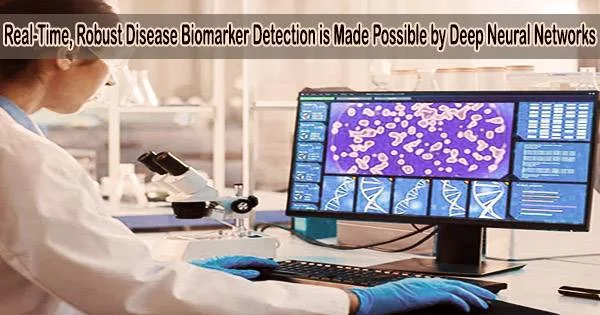Real-time diagnostic and disease-monitoring technologies require sophisticated systems for the detection of biomarker molecules, such as DNA or proteins, that signal the existence of a disease.
The work of UC Santa Cruz’s eminent electrical and computer engineering professor Holger Schmidt and his team has long been focused on creating novel, extremely sensitive devices called optofluidic chips to detect biomarkers.
Schmidt’s graduate student Vahid Ganjalizadeh led an effort to use machine learning to enhance their systems by improving its ability to accurately classify biomarkers. According to a recent publication published in Nature Scientific Reports, the deep neural network he designed can classify particle signals with 99.8% accuracy in real-time using a system that is reasonably affordable and portable for point-of-care applications.
The signals that the sensors acquire while using biomarker detectors in the field or at a point-of-care context, like a clinic, could not be as good as those they would receive in a lab or another controlled environment. This could be caused by a number of things, like the necessity to employ less expensive chips to reduce expenses or environmental factors like temperature and humidity.
Schmidt and his colleagues created a deep neural network that can confidently pinpoint the source of a faint signal in order to overcome the obstacles posed by weak signals. In order for the neural network to recognize patterns and identify new signals with extremely high accuracy, the researchers trained it using known training signals and taught it to recognize potential changes it could see.
First, a parallel cluster wavelet analysis (PCWA) approach designed in Schmidt’s lab detects that a signal is present. The neural network then analyzes the signal, which may be shaky or noisy, and determines its origin. Users can get results from this system in a split second because it operates in real time.
Unlike some research that requires running on supercomputers to do high-accuracy detection, we proved that even a compact, portable, relatively cheap device can do the job for us. It makes it available, feasible, and portable for point-of-care applications.
Vahid Ganjalizadeh
“It’s all about making the most of possibly low-quality signals, and doing that really fast and efficiently,” Schmidt said.
A smaller version of the neural network model can run on portable devices. In the paper, the researchers run the system over a Google Coral Dev board, a relatively cheap edge device for accelerated execution of artificial intelligence algorithms. This indicates that, in comparison to other methods, the system uses less power to carry out the processing.
“Unlike some research that requires running on supercomputers to do high-accuracy detection, we proved that even a compact, portable, relatively cheap device can do the job for us,” Ganjalizadeh said. “It makes it available, feasible, and portable for point-of-care applications.”
Contrary to other systems that rely on cloud computing, the entire system is made to be utilized entirely locally, allowing data processing to take place without an internet connection. Because results may be created without the need to exchange data with a cloud server provider, this also offers a benefit for data security.
There is no longer a need to bring a laptop into the field because it can deliver results on a mobile device.
“You can build a more robust system that you could take out to under-resourced or less- developed regions, and it still works,” Schmidt said.
This enhanced system will be capable of detecting all additional biomarkers, including COVID-19, Ebola, flu, and cancer biomarkers, that have previously been detected by Schmidt’s lab’s systems. The system may be modified to identify any kind of signal, even though they are now concentrated on medical applications.
Schmidt and his lab mates intend to upgrade their gadgets with even more dynamic signal processing capabilities in order to advance the technology. By combining the processing methods required to identify signals at both low and high molecule concentrations, the system will be made simpler.
The group is also attempting to combine separate components of the system into the optofluidic chip’s integrated architecture.





